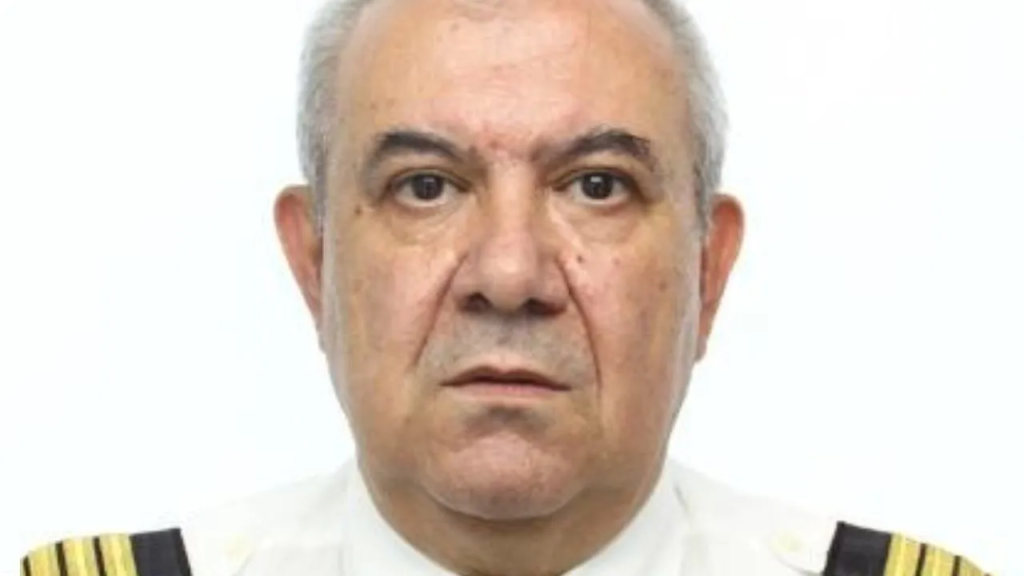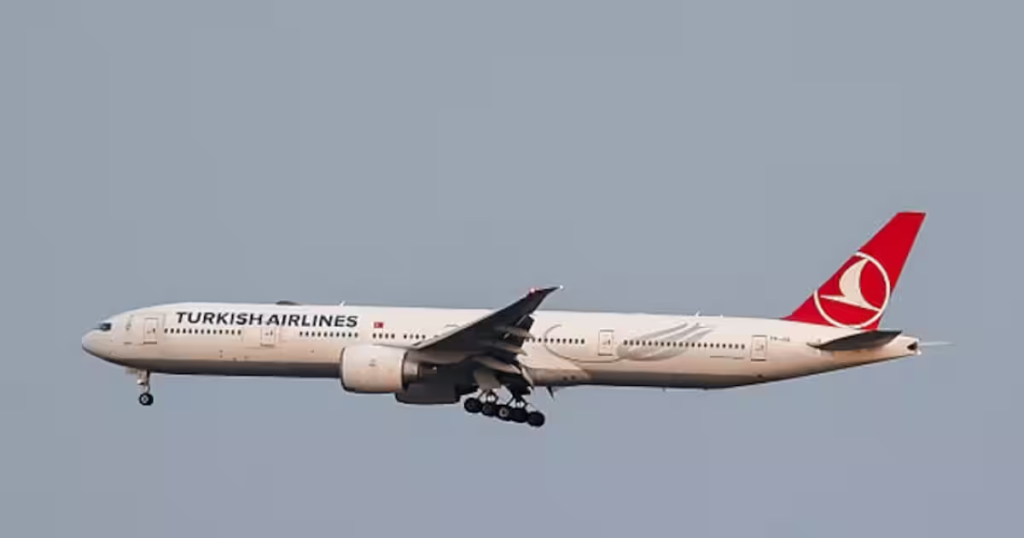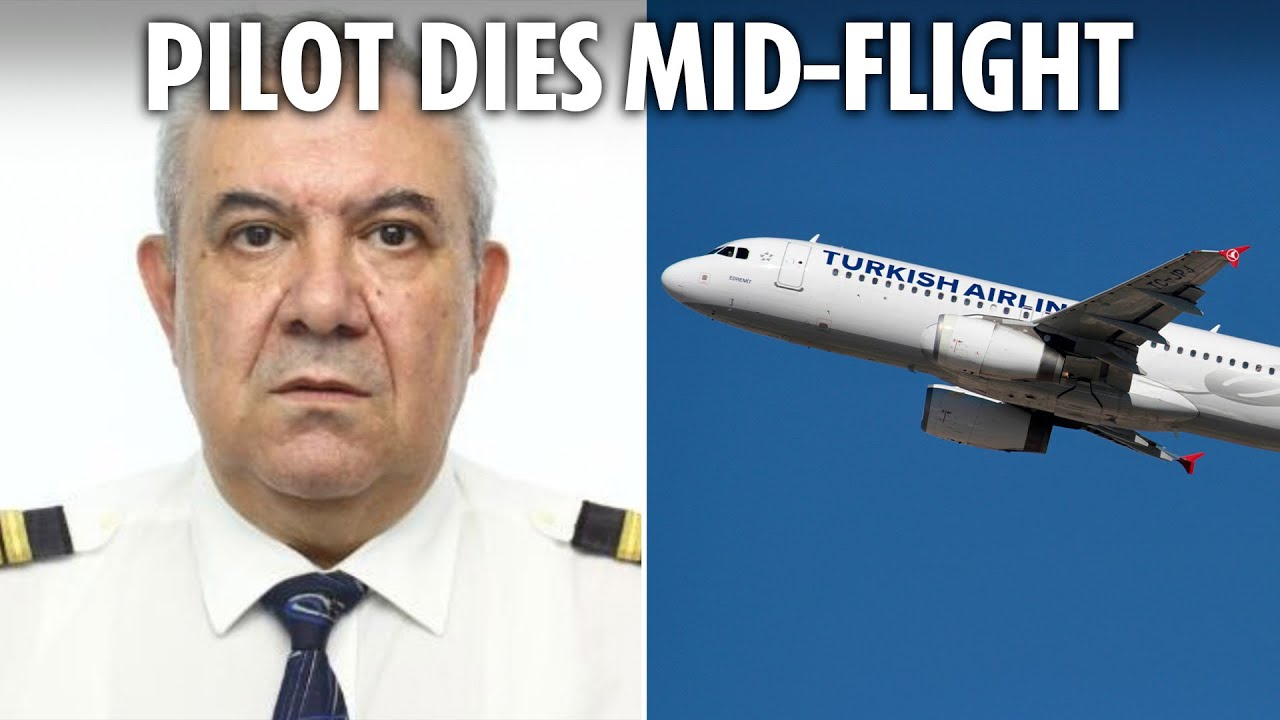The sudden death of Captain Ilcehin Pehlivan aboard Turkish Airlines Flight TK204 from Seattle to Istanbul has brought attention to the critical importance of aviation safety protocols. The 59-year-old pilot collapsed mid-flight, prompting his fellow crew members to make an emergency landing in New York.
The tragic incident highlights both the challenges faced by airline crews in such situations and the potential future of aviation where advancements in technology may change cockpit operations.
Mid-Flight Emergency and Response
Flight TK204 took off from Seattle around 19:00 Pacific Time, heading towards Istanbul. At some point during the flight, the pilot, Captain Ilcehin Pehlivan , became ill while the plane was flying over Canadian airspace.
According to Turkish Airlines officials, when the captain collapsed, the second pilot and co-pilot immediately took control of the Airbus A350, steering it towards the nearest major airport, John F. Kennedy (JFK) Airport in New York City, to make an emergency landing.
Read : Turkey: A Captivating Fusion Where East Triumphantly Meets West
Despite efforts to provide first aid to the captain, they were unsuccessful, and he passed away before the plane could land.
The flight landed at JFK Airport approximately eight hours after taking off from Seattle. While the airline made alternative arrangements for passengers to continue their journey to Istanbul, the tragedy deeply affected the crew and passengers onboard.
Read : Turkey Will Lose More Than It Gains: Putin on Trade with the West
Captain Ilcehin Pehlivan , a seasoned pilot with Turkish Airlines since 2007, had undergone a routine medical check-up in early March, which did not indicate any health issues that could have compromised his ability to fly.
In situations like these, flight crews are well-trained to respond to medical emergencies, including incapacitation of cockpit crew members. Aviation regulations typically require two pilots to be in the cockpit during flights to ensure the safe operation of the aircraft.
This rule, particularly for large commercial jets, is designed to protect against any unforeseen medical or technical emergencies, as demonstrated by the quick response of Ilcehin Pehlivan’s colleagues.
Aviation Health Protocols and Safety Concerns
In the wake of Captain Ilcehin Pehlivan’s passing, questions about the health of pilots and the protocols surrounding medical fitness have arisen. Pilots are required to undergo regular medical exams to maintain their licenses and ensure their capability to fly safely.

For those under the age of 40, these medical checks are mandatory every 12 months, while pilots over the age of 40 must renew their medical certificates every six months. Despite this rigorous system, unexpected health issues can still arise, as was the case with Captain Ilcehin Pehlivan .
This is not the first incident of a pilot passing away during a flight. In 2015, an American Airlines pilot aged 57 collapsed and died during a flight from Phoenix to Boston.
In that case, the first officer took over control of the plane, diverting it to Syracuse for an emergency landing. Such occurrences, though rare, underscore the importance of the two-pilot rule in commercial aviation.
Aviation safety experts and medical professionals continue to refine and review the guidelines for pilot health to prevent such incidents. However, the unpredictable nature of certain health conditions, such as heart attacks or strokes, poses ongoing challenges.
Additionally, the strain of long-haul flights, jet lag, and the physical demands of flying can exacerbate health risks, especially for older pilots. The aviation community, including organizations like Turkey’s air traffic controllers’ association (TATCA), has expressed condolences to Ilcehin Pehlivan’s family and colleagues, recognizing his years of dedicated service.
Future of Cockpit Operations: Single-Pilot Technology
The tragic death of Captain Pehlivan also brings to light ongoing discussions about the future of cockpit operations. Currently, two pilots are required to be in the cockpit at all times during large commercial flights, especially during takeoff, landing, and other critical phases of the flight.
However, there has been increasing debate within the aviation industry regarding the possibility of reducing cockpit crews during certain flight phases.
The European Union Aviation Safety Agency (EASA) has been exploring the potential for single-pilot operations during the cruise phase of flights. The idea is that, with advancements in technology, a single pilot could manage the aircraft while other cockpit crew members rest, making long-haul flights more efficient.
However, this initiative has faced significant opposition from pilots’ unions and aviation groups, including the European Cockpit Association. These organizations argue that reducing the number of pilots in the cockpit at any time could compromise safety and increase the risk of accidents in the event of pilot incapacitation.

The incident on Turkish Airlines Flight TK204 highlights the inherent risks involved in such proposals. In this case, the presence of a second pilot and co-pilot allowed for quick action when Captain Ilcehin Pehlivan collapsed, ensuring the safe landing of the aircraft.
Critics of single-pilot technology argue that no amount of automation can fully replace the human judgment and teamwork required in emergency situations.
Furthermore, while AI and automation have made significant strides in aviation, particularly in areas like autopilot systems and predictive maintenance, the complexity of operating an aircraft still requires human oversight.
The unpredictability of certain in-flight situations, whether mechanical malfunctions or medical emergencies like the one experienced on Flight TK204, underscores the need for experienced pilots to be present at all times.
While the idea of single-pilot operations during cruise phases may offer potential cost savings and operational efficiency, aviation regulators must weigh these benefits against the risks to passenger safety. The tragic loss of Captain Ilcehin Pehlivan serves as a reminder of the importance of maintaining robust safety protocols and ensuring that cockpit crews are equipped to handle any situation that may arise.
The mid-flight death of Captain Ilcehin Pehlivan aboard Turkish Airlines Flight TK204 is a sobering reminder of the unpredictability of health emergencies in aviation. Thanks to the swift actions of his fellow pilots, the plane was able to land safely, and passengers were spared further distress.
This incident also raises important questions about the future of cockpit operations, particularly the push for single-pilot technology. While advancements in AI and automation hold promise for improving efficiency in aviation, the safety of passengers and crew must always remain the top priority.
As the aviation industry continues to evolve, balancing technological progress with safety concerns will be key. The loss of a dedicated and experienced pilot like Captain Ilcehin Pehlivan is a tragedy for his family, colleagues, and the entire aviation community, and his legacy serves as a testament to the critical role that human pilots play in ensuring the safety of air travel.

